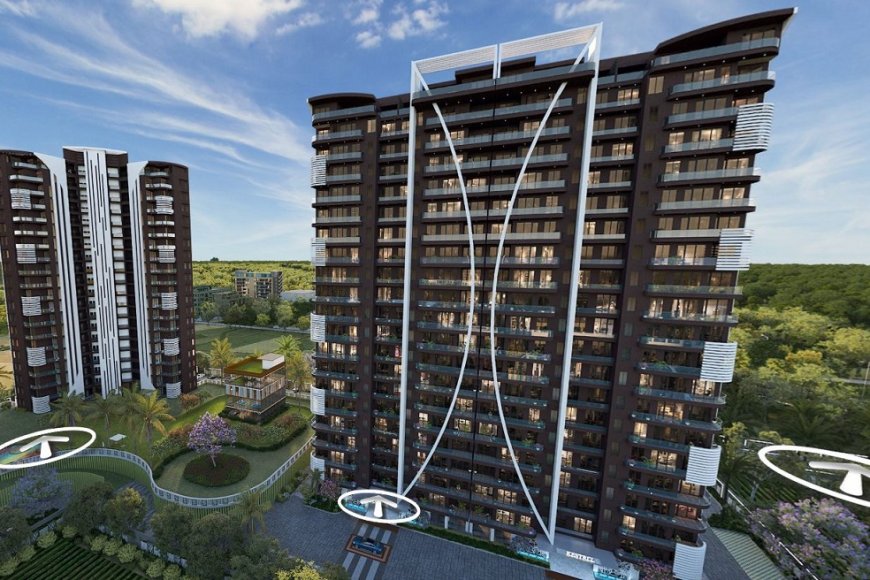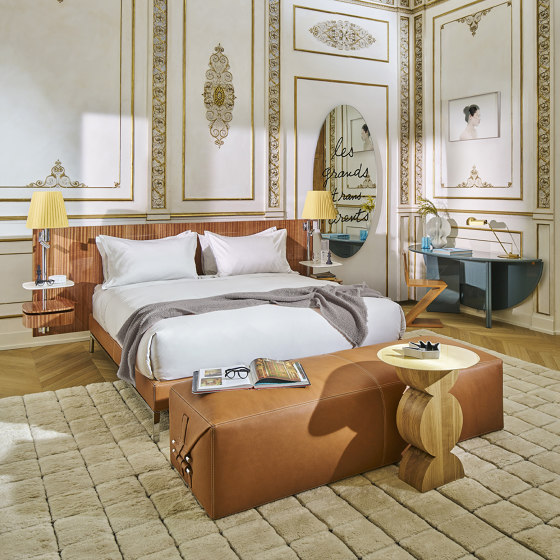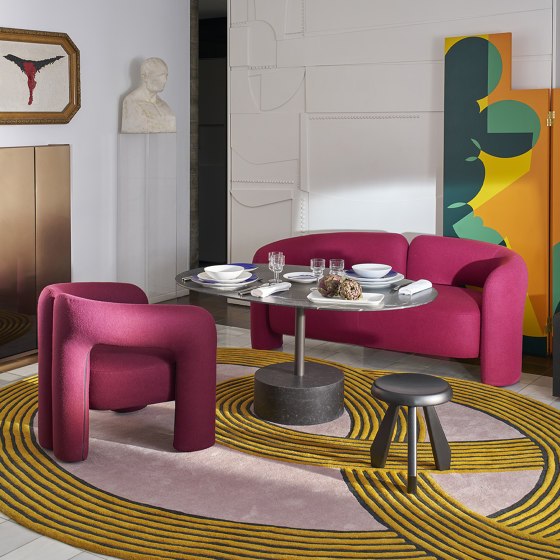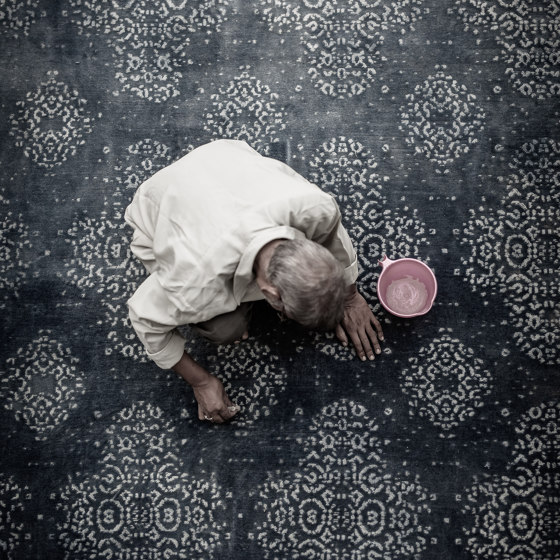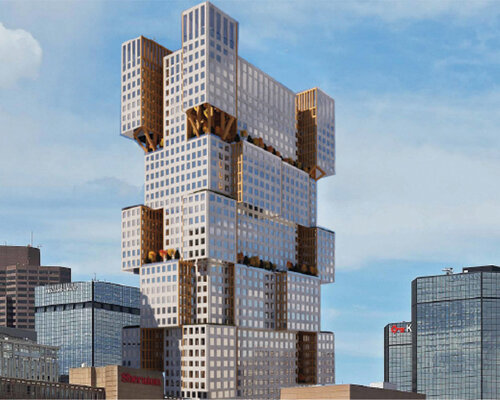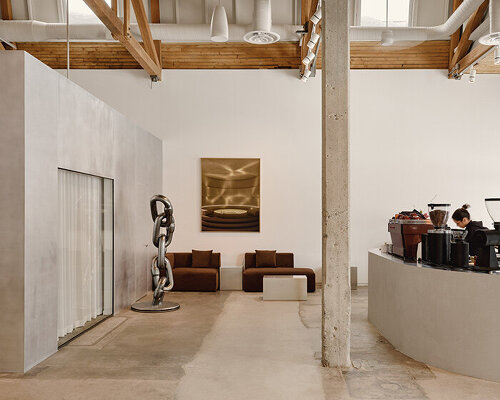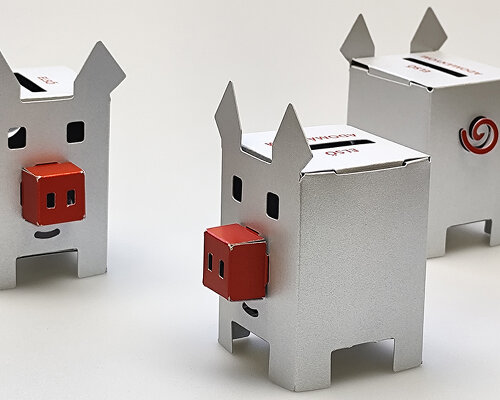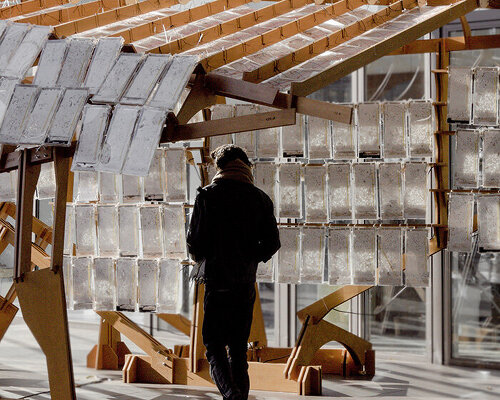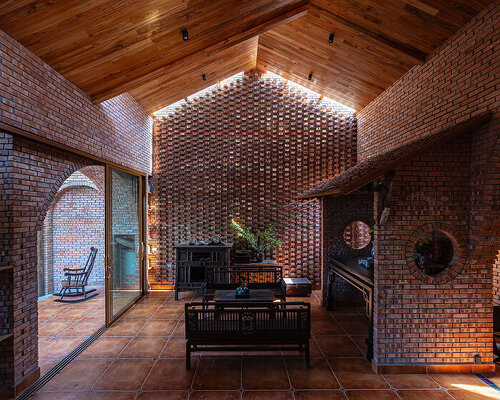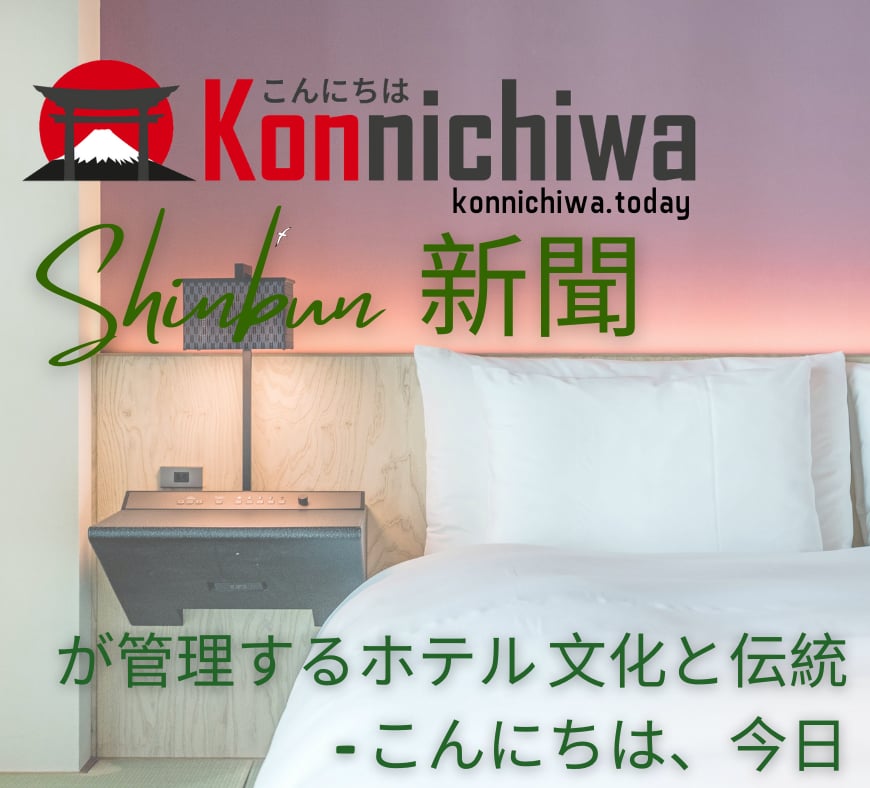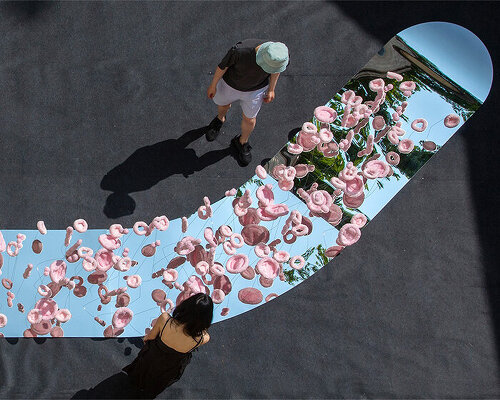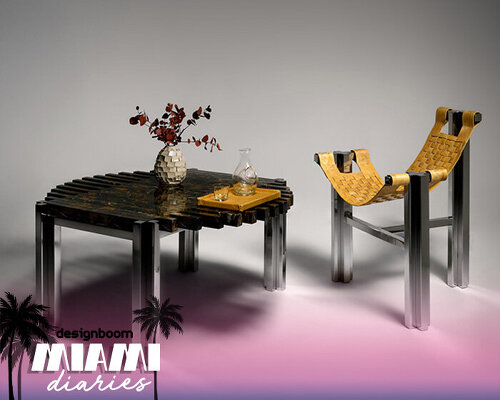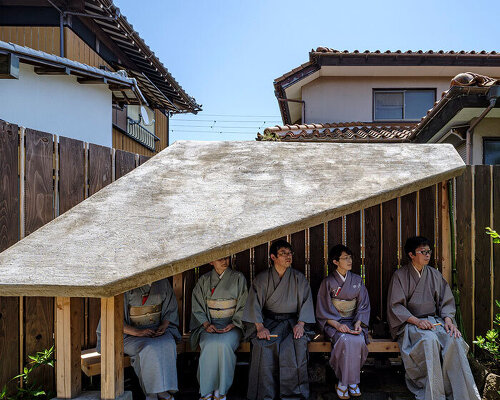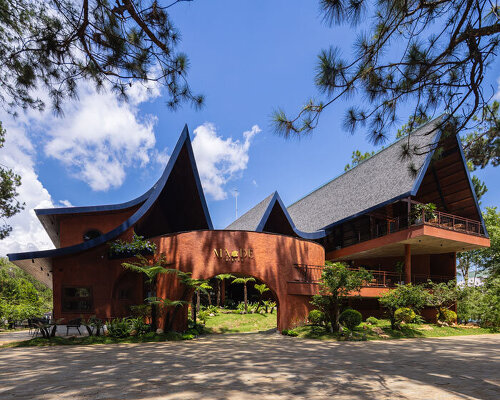brick and turquoise tiles clad vaulted aghajoon communal kitchen in iran

Aghajoon Kitchen Reinterprets Vernacular Yazd Architecture
Aghajoon Kitchen is a permanent public facility designed to replace an informal, roofless village kitchen that had long functioned as the social hub of Khalilabad, Yazd, Iran. Serving both practical and cultural purposes, the new structure, developed by Seyed Amirhossein Sahiholnasab, accommodates communal cooking while continuing its role in religious ceremonies, weddings, and gatherings.
The design takes reference from Yazd’s architectural traditions and the memory of a now-demolished school adjacent to the site. Materials such as brick, mud plaster, and turquoise tiles were selected to ensure visual and cultural continuity with the surroundings. The building’s turquoise-clad axis organizes circulation while emphasizing its symbolic role as a setting for community rituals.

east facade with openings designed for food distribution | all images courtesy of Seyed Amirhossein Sahiholnasab
Seyed Amirhossein Sahiholnasab revives communal kitchen
Located on a narrow urban plot bordered by residential buildings and the former school, the site posed limitations for daylight and natural ventilation. Seyed Amirhossein Sahiholnasab’s architectural team addressed these constraints through cubic skylights placed on the roof and recessed brick screens on the eastern facade. The design also balanced contemporary sanitation standards with respect for local context. Integration of the structural and architectural systems enabled cost reduction of approximately 15%, while maintaining proportions consistent with regional construction practices.
The building is organized around a large brick-clad arch supported by a steel truss resting on short base walls. This structural strategy provides both stability and formal clarity. Turquoise tiles define the southern facade and the building’s interior spine, marking circulation points and referencing traditional ornamentation. Two cubic skylights on the roof and perforated brickwork on the eastern wall provide daylight and ventilation. Brick, plaster, and tile were used throughout, executed with local craftsmanship combined with precise detailing.

the building in relation to its historic surroundings, including remnants of an old school and adjacent brick houses
Turquoise Axis Organizes Aghajoon Communal Kitchen
The 22 × 11-meter site is organized along a central axis, visually reinforced with turquoise tiles and culminating in a basin for washing large pots. The project is distributed across three levels. The basement houses storage rooms, a mechanical room, restrooms, and a women’s ablution space. The ground floor features a main cooking area, restrooms, and men’s ablution space. Finally, the mezzanine organizes a rest area accessed via a turquoise-tiled stair.
The basement benefits from thermal mass to maintain cool conditions, while evaporative coolers positioned at the peak of the arch enhance summer comfort. Overall, the layout promotes intuitive circulation, thermal efficiency, and operational clarity, while reinforcing the site’s role as a cultural and social center.

close-up of a distribution opening on the east facade
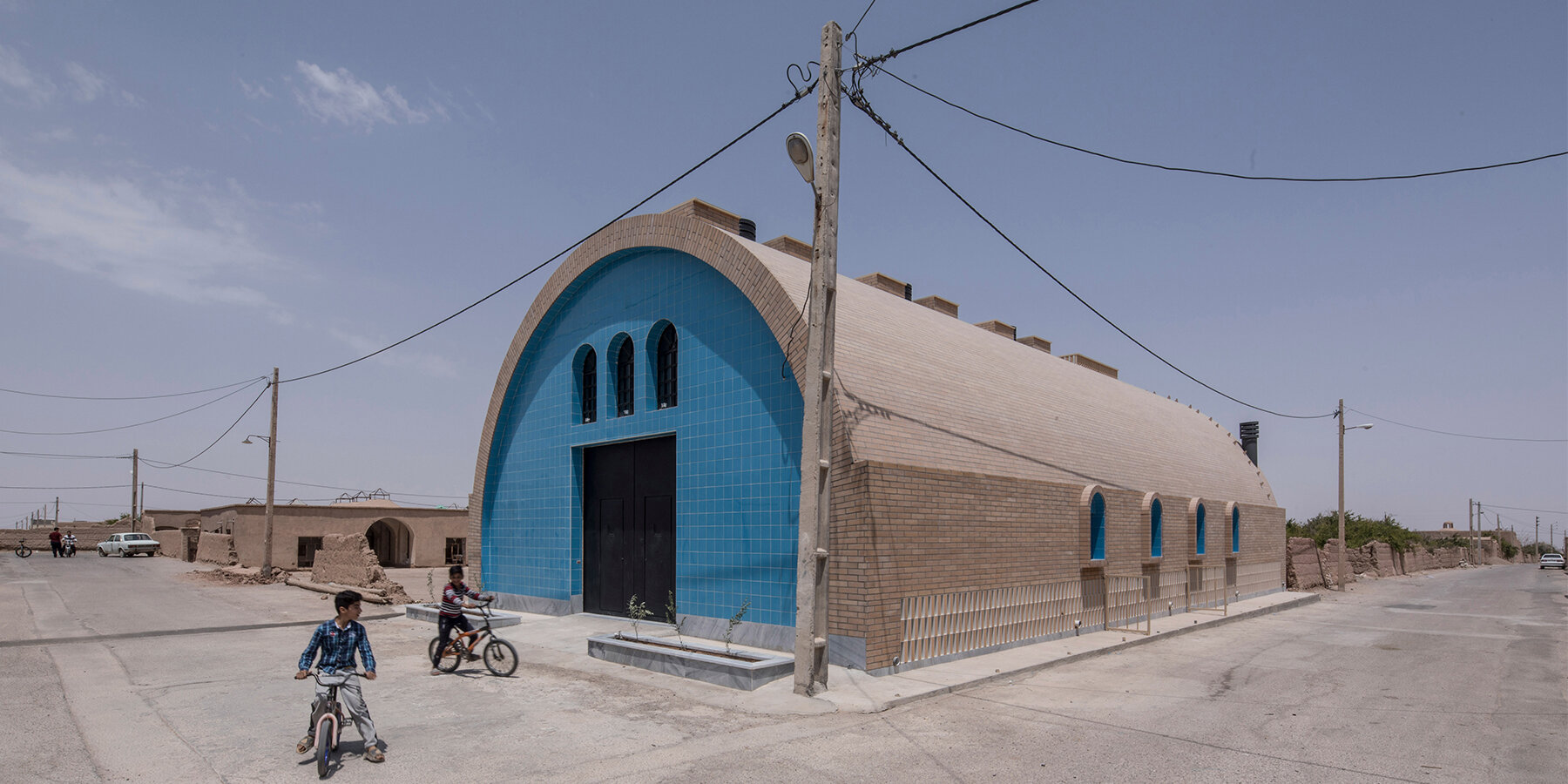
brick, mud plaster, and turquoise tiles integrate the building with its surroundings

overall view of the building within the surrounding fabric

the design draws inspiration from local Yazd architectural traditions

the building illuminates at night within the neighborhood fabric
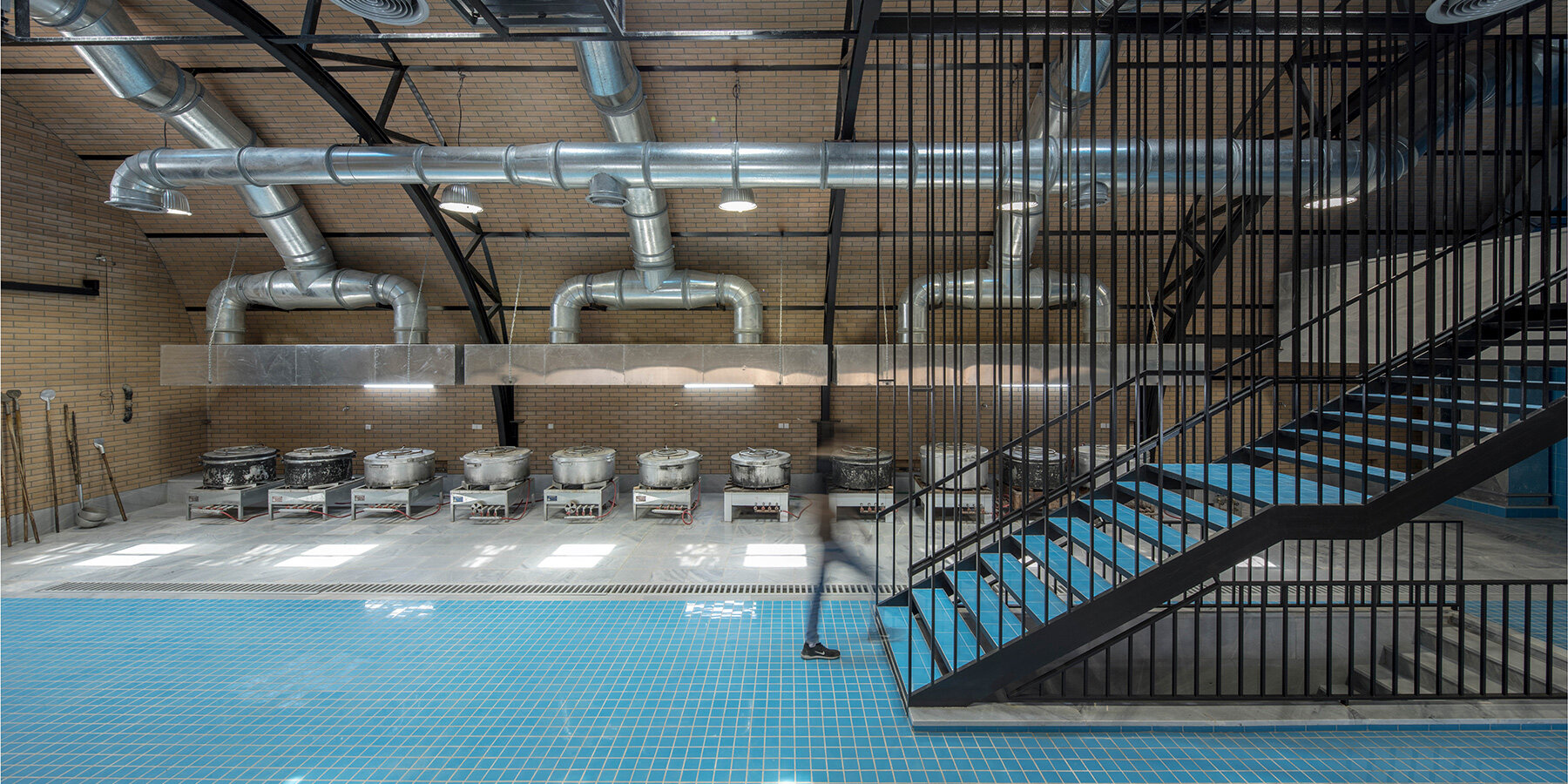
vertical circulation connecting the different levels of Aghajoon communal Kitchen
project info:
name: Aghajoon Kitchen
lead architect: Seyed Amirhossein Sahiholnasab
design team: Pasha Nobahar, Mohammad Amin Sahiholnasab
location: Khalilabad, Yazd, Iran
designboom has received this project from our DIY submissions feature, where we welcome our readers to submit their own work for publication. see more project submissions from our readers here.
edited by: christina vergopoulou | designboom
The post brick and turquoise tiles clad vaulted aghajoon communal kitchen in iran appeared first on designboom | architecture & design magazine.



